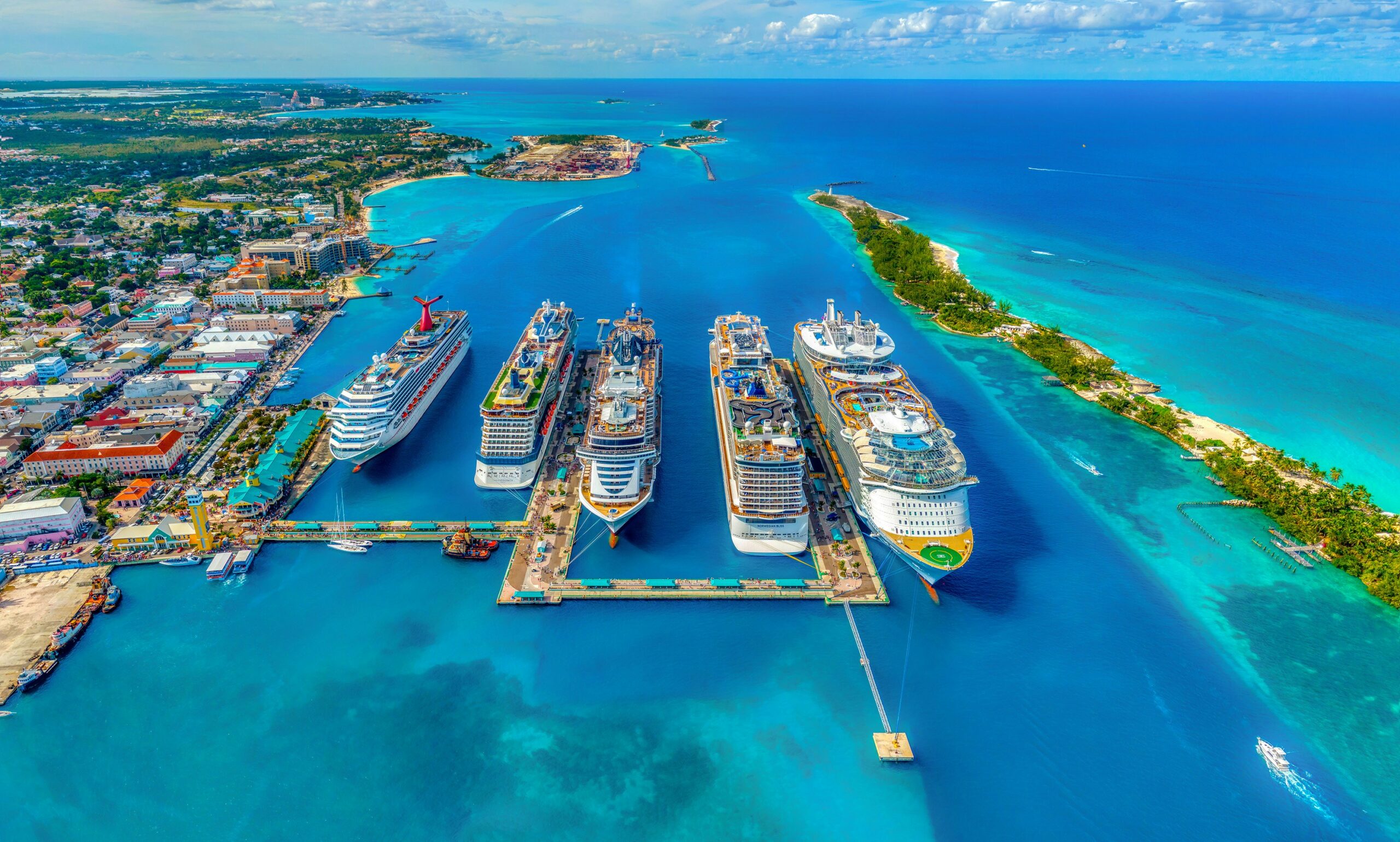Cruise ship companies will have to pay for the carbon dioxide produced by their vessels under new global rules agreed to on Friday.
The deal, led by the International Maritime Organization (IMO), covers 97% of the world’s shipping fleet. It will require shipowners to pay up to $380 per tonne of carbon dioxide emitted unless they take steps to cut emissions.
The rules will get stricter over time. By 2035, ships will need to cut emissions by 43%. If they go over the limits, they’ll have to pay fees for the extra pollution.
The IMO is a United Nations agency that sets shipping rules for navigation, vessel standards, and safety. It confirmed that the new rules will apply to all vessels over 5,000 tonnes, including cruise and passenger ships, making shipping the first industry to agree on fines for emissions.
Participating UN Countries will need to adopt the agreement into their own national laws by 2028.
The United States withdrew from the decarbonization talks before the agreement took place, according to Reuters.
Saudi Arabia, Russia, the United Arab Emirates, and several smaller Gulf countries also pushed back on the regulations. However, they eventually joined most countries in backing a compromised deal.
While it’s still unclear if the U.S. will accept the final deal, its withdrawal is not expected to derail the agreement.
How Much will the Shipping Carbon Fees Raise and Where Will the Money Go?

The IMO said the measure is estimated to raise about $10 billion a year, lower than the $60 billion originally hoped for. The talks have been ongoing for 10 years.
The IMO said the money will go into a net-zero fund, which will be used for emission reduction efforts in the sector, such as developing cleaner fuels.
The rules aim to push companies to adopt more sustainable fuels and run their ships more efficiently. Under the deal, vessels will also be able to trade carbon credits with each other.
Cruise emissions have come under increased scrutiny due to their high carbon intensity.
According to Greenmatch, a company that works to increase transparency around emissions, a single passenger can produce over 200kg of CO2 emissions during a week-long trip. A recent analysis by Which estimates that some large cruise ships emit the same amount of emissions as a small town annually.
The expected emissions reduction from the new rules may be modest in the short term – only around 8% by 2030, according to consultancy UMAS. That falls short of the IMO’s 2023 climate strategy, which called for a 20% cut by 2030.
IMO Secretary-General Arsenio Dominguez called the agreement, Marpol Annex VI, a step forward. “The approval of draft amendments to Marpol Annex VI mandating the IMO net-zero framework represents another significant step in our collective efforts to combat climate change, to modernize shipping and demonstrates that IMO delivers on its commitments,” he said.
“Now, it is important to continue working together, engaging in dialogue and listening to one another, if we are to create the conditions for successful adoption,” he said.
Industry Response
Some countries expressed frustration at how much the deal was watered down.
“Let us be clear about who has abandoned 1.5°C. Saudi Arabia, the U.S. and fossil fuel allies pushed down the numbers to an untenable level and blocked progress at every turn,” said Ralph Regenvanu, the environment minister of Vanuatu, at the IMO talks.
Skift contacted several large global cruise companies.
A spokesperson from Royal Caribbean and Carnival said that the Cruise Lines International Association (CLIA) is in charge of the cruise industry response. Its members include all the major cruise companies.
A spokesperson for the CLIA told Skift it participated in the IMO meetings.
“We will continue to analyze the framework on behalf of our members and how it could help close the cost gap between zero and near-zero greenhouse gas fuels and traditional fuels,” the spokesperson said.
They added that said that since some governments and regions already have carbon fees in place to fund decarbonization, the new IMO rules should be considered carefully to avoid charging companies twice for the same emissions.
“It remains critically important that the IMO requirements remain realistic, and that regional or national revenue-generating programs are avoided or harmonized with IMO requirements to prevent double counting of emissions or related payments into more than one system,” the spokesperson said.
“CLIA and our cruise line members remain committed to pursuing net-zero emissions by 2050 and will continue to pursue multiple paths to fulfill that ambition. We also continue to call on governments and fuel providers to do their part to help bring the needed alternative fuels to the market at scale.”
Skift contacted the U.S. government about its withdrawal from the IMO talks but did not receive a response.
Skift’s in-depth reporting on climate issues is made possible through the financial support of Intrepid Travel. This backing allows Skift to bring you high-quality journalism on one of the most important topics facing our planet today. Intrepid is not involved in any decisions made by Skift’s editorial team.


